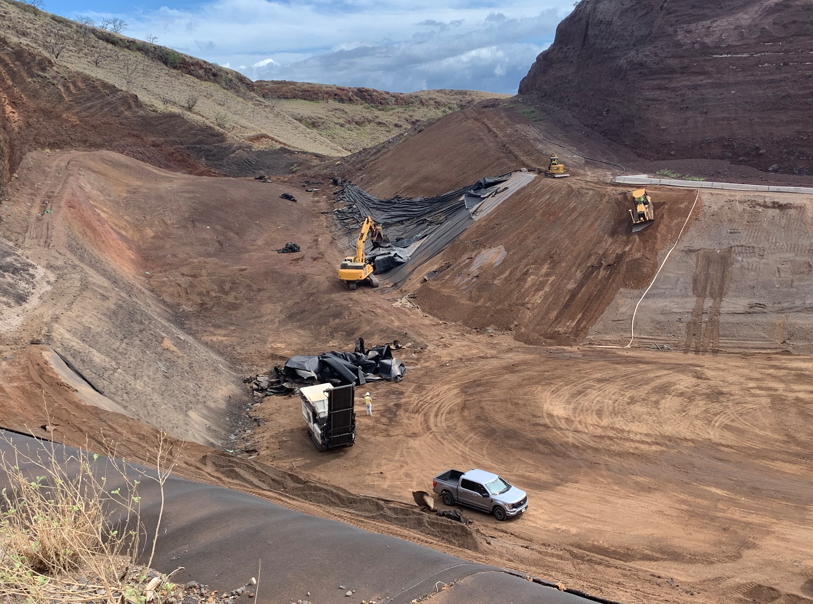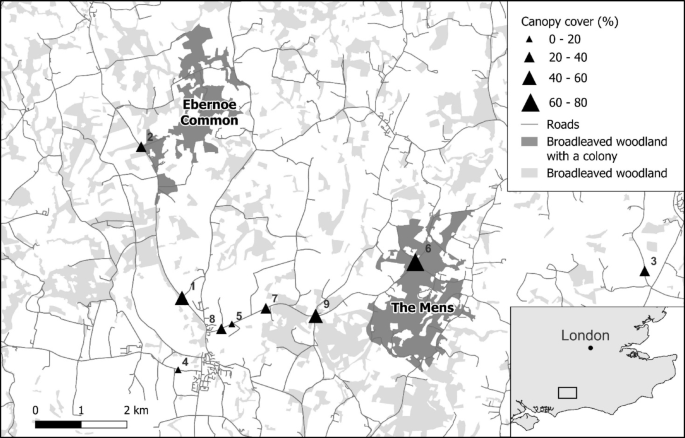Post-Wildfire Debris Management and Site Restoration in Maui: A Sustainable Development Goals Report
Executive Summary: Advancing Sustainable Community Recovery
Following the 2023 Lahaina Wildfire, significant progress has been made in debris management, aligning with multiple Sustainable Development Goals (SDGs). The transfer of all wildfire-related material from the temporary site at Olowalu to a permanent, secure facility in Central Maui marks a critical milestone. Restoration of the temporary site has now commenced, focusing on environmental protection and land rehabilitation, directly contributing to SDG 11 (Sustainable Cities and Communities) and SDG 15 (Life on Land).
Debris Removal and Public Health Protection (SDG 3, SDG 11)
The successful removal and containment of hazardous materials are fundamental to ensuring the long-term health and safety of the community, a core tenet of SDG 3 (Good Health and Well-being). The operation also represents a vital step in rebuilding a safe and resilient community as outlined in SDG 11.
- Total Debris Managed: 400,000 tons of ash, soil, and fire-related material.
- Properties Cleared: Debris was collected from 1,390 residential and 149 commercial properties.
- Permanent Disposal: All materials have been transferred to a protected, permanent location, ensuring they will remain undisturbed and safeguarding community health.
Environmental Safeguards and Water Resource Management (SDG 6, SDG 15)
The temporary Olowalu site was engineered with robust environmental safeguards to prevent contamination, directly supporting SDG 6 (Clean Water and Sanitation) and SDG 15 (Life on Land). The U.S. Army Corps of Engineers (USACE) implemented a multi-layered system to protect local ecosystems.
- Protective Liners: Geotextile layers and a welded liner were installed to create an impermeable barrier, preventing hazardous substances from leaching into the soil.
- Leachate Collection: A comprehensive leachate collection system was operated to capture and manage contaminated water.
- Groundwater Monitoring: Monitoring wells were established to continuously assess groundwater quality and ensure the integrity of the containment system.
- Verification: Final soil and groundwater testing will be conducted to confirm that protective systems functioned as designed and that no contamination of the surrounding environment occurred.
Land Restoration and Resilient Infrastructure (SDG 9, SDG 15)
The restoration phase focuses on returning the temporary site to its original condition and enhancing local infrastructure, contributing to SDG 9 (Industry, Innovation, and Infrastructure) and SDG 15. The work, projected to last approximately 10 weeks, involves a systematic decommissioning and rehabilitation process.
- Removal of all temporary infrastructure, including the liner and leachate system.
- Repair of roads used during the hauling process.
- Installation of permanent drainage and safety features to improve infrastructure resilience.
- A commitment to restoring the terrestrial ecosystem of the temporary site as closely as possible to its original state.
Partnerships for Sustainable Recovery (SDG 16, SDG 17)
This recovery effort exemplifies SDG 17 (Partnerships for the Goals) and SDG 16 (Peace, Justice, and Strong Institutions) through the effective collaboration between local and federal entities. The partnership ensures an accountable, transparent, and efficient response to the disaster.
- Lead Agencies: Maui County and the U.S. Army Corps of Engineers.
- Implementing Contractor: Environmental Chemical Corporation.
- Outcome: The coordinated effort between government institutions and a private sector partner has been instrumental in achieving critical recovery milestones in a manner consistent with sustainable development principles.
1. Which SDGs are addressed or connected to the issues highlighted in the article?
- SDG 6: Clean Water and Sanitation – The article discusses measures to protect water resources from contamination.
- SDG 9: Industry, Innovation, and Infrastructure – The article mentions the repair and improvement of local infrastructure as part of the restoration process.
- SDG 11: Sustainable Cities and Communities – The focus is on disaster recovery, waste management, and making the community safe after the Lahaina wildfire.
- SDG 12: Responsible Consumption and Production – The article details the management and disposal of hazardous waste generated by the disaster.
- SDG 15: Life on Land – The core theme is the restoration of land and the prevention of environmental contamination.
2. What specific targets under those SDGs can be identified based on the article’s content?
SDG 6: Clean Water and Sanitation
- Target 6.3: By 2030, improve water quality by reducing pollution, eliminating dumping and minimizing release of hazardous chemicals and materials.
Explanation: The article highlights the implementation of “leachate collection systems and groundwater monitoring wells” at the temporary debris site. These measures were specifically designed to prevent hazardous materials from the 400,000 tons of ash and debris from contaminating the local water supply.
SDG 9: Industry, Innovation, and Infrastructure
- Target 9.1: Develop quality, reliable, sustainable and resilient infrastructure… to support economic development and human well-being.
Explanation: The restoration work described in the article includes “making road repairs and installing drainage and safety features.” This directly relates to improving and building resilient local infrastructure following a disaster.
SDG 11: Sustainable Cities and Communities
- Target 11.5: By 2030, significantly reduce the number of deaths and the number of people affected and… decrease the direct economic losses… caused by disasters.
Explanation: The entire operation is a post-disaster recovery effort. The removal of debris from “149 commercial and 1,390 residential properties” is a direct action to mitigate the long-term effects of the Lahaina wildfire on the community and its people. - Target 11.6: By 2030, reduce the adverse per capita environmental impact of cities, including by paying special attention to… municipal and other waste management.
Explanation: The article is centered on the large-scale management of “400,000 tons of ash, soil and fire-related material.” The process of transferring this waste from a temporary site to a permanent, protected location is a critical aspect of municipal waste management after a major disaster.
SDG 12: Responsible Consumption and Production
- Target 12.4: By 2020, achieve the environmentally sound management of chemicals and all wastes throughout their life cycle… and significantly reduce their release to air, water and soil in order to minimize their adverse impacts on human health and the environment.
Explanation: The article details the careful management of hazardous wildfire debris. The temporary site was built with “environmental safeguards, including geotextile layers, a welded liner, [and] leachate collection systems” to ensure the waste was contained and did not harm the environment before its transfer to a permanent location.
SDG 15: Life on Land
- Target 15.1: By 2020, ensure the conservation, restoration and sustainable use of terrestrial and inland freshwater ecosystems and their services.
Explanation: A primary goal of the project is to “restore the temporary site to its original state as closely as possible.” This action of land restoration after its use for temporary waste storage is a direct contribution to this target. - Target 15.5: Take urgent and significant action to reduce the degradation of natural habitats.
Explanation: The plan to conduct “soil and groundwater testing to confirm that the protective systems functioned as designed and that no contamination reached the surrounding environment” is a direct action to ensure the natural habitat at and around the Olowalu site was not degraded by the storage of hazardous materials.
3. Are there any indicators mentioned or implied in the article that can be used to measure progress towards the identified targets?
Yes, the article mentions several quantitative and qualitative indicators that can be used to measure progress:
- Amount of hazardous waste managed: The article specifies that “400,000 tons of ash, soil and fire-related material” have been transferred. This is a direct indicator for Target 12.4, measuring the volume of waste that has been managed in an environmentally sound manner.
- Number of properties cleared: The debris came from “149 commercial and 1,390 residential properties.” This serves as an indicator for Target 11.5, quantifying the scale of the disaster recovery effort in the community.
- Implementation of environmental safeguards: The article explicitly lists the use of “geotextile layers, a welded liner, leachate collection systems and groundwater monitoring wells.” The successful installation and operation of these systems are indicators of progress towards Targets 6.3 and 12.4.
- Land area restored: The goal to “restore the temporary site to its original state” implies that the completion of this restoration is a key indicator for Target 15.1.
- Results of environmental testing: The plan to conduct “soil and groundwater testing” provides a clear, scientific indicator to measure the success of the environmental protection measures and confirm that no contamination occurred, directly relating to Targets 6.3 and 15.5.
- Infrastructure improvements: The completion of “road repairs and installing drainage and safety features” serves as a tangible indicator for progress on Target 9.1, measuring the restoration and improvement of local infrastructure.
4. SDGs, Targets and Indicators Identified in the Article
| SDGs | Targets | Indicators |
|---|---|---|
| SDG 11: Sustainable Cities and Communities | 11.6: Reduce the adverse per capita environmental impact of cities, including… waste management. | Number of properties cleared of debris (149 commercial and 1,390 residential). |
| SDG 12: Responsible Consumption and Production | 12.4: Achieve the environmentally sound management of chemicals and all wastes. | Total volume of hazardous waste transferred to a permanent site (400,000 tons). |
| SDG 15: Life on Land | 15.1: Ensure the conservation, restoration and sustainable use of terrestrial… ecosystems. | Restoration of the temporary debris site to its original state. |
| SDG 6: Clean Water and Sanitation | 6.3: Improve water quality by reducing pollution… and minimizing release of hazardous chemicals. | Confirmation of no contamination through soil and groundwater testing. |
| SDG 9: Industry, Innovation, and Infrastructure | 9.1: Develop quality, reliable, sustainable and resilient infrastructure. | Completion of road repairs and installation of drainage and safety features. |
Source: mauinews.com






